[Himeji City ] How much do you know about Soja Soja , Harima Soja ?
![[Himeji City ] How much do you know about Soja Soja , Harima Soja ?](https://resources.matcha-jp.com/resize/720x2000/2023/11/22-153566.webp)
It is the ``Shrine of the General Guardian of Harima Province,'' which brings together the gods of Harima Province, and the ``Shrine of the Guardianship of Himeji Castle,'' which was revered by the successive lords of Himeji Castle. Let me introduce you to ``Harima Kuni Soja Etate Hyoshu Shrine'', also known as ``Soja-san'', which has been loved by the local people and has many people indebted to it.
-
Table of Contents
- What kind of deity is "Harima Soja Sosha Itatehisushi Shrine"?
- Visiting a shrine starts with giving thanks
- Events at Soja-san
- The Mitsuyama Festival, a grand festival held once every 20 years
- There's plenty to see within the grounds of Soja
- Useful Information
- basic information
What kind of deity is "Harima Soja Sosha Itatehisushi Shrine"?
In introducing Harima Soja Sosha Itatehyosu Shrine (hereafter referred to as Soja san), let's first take a look at the temple seal.
![[Himeji City ] How much do you know about Soja Soja , Harima Soja ?](https://resources.matcha-jp.com/resize/720x2000/2023/11/22-153567.webp)
Anyone who likes goshuin stamps will immediately recognize that this one is a little unusual.
Generally, the name of the shrine is written in ink in the Chuo and then the shrine's crest or seal is stamped on top. However, on this piece, the name "Itatehyosu Shrine" is written on top and then the Aka (vermilion) seal of " Harima Province Soja " is stamped on top, meaning that the names of different shrines are combined into one piece.
This is the only type of goshuin stamp that is given out at Soja. Many people seem to be wondering, "What is Itatehyoshu Shrine?" and "What are the goshuin stamps at Soja?" so let me explain.
![[Himeji City ] How much do you know about Soja Soja , Harima Soja ?](https://resources.matcha-jp.com/resize/720x2000/2023/11/22-153569.webp)
This is National Route 2 heading Higashi. It was taken from the south side of Soja.
In 1652 (Keian 5), a large granite torii gate (prefecturally designated cultural property) was donated by Lord Sakakibara Tadatsugu, the lord of Himeji. The stone pillars and the plaque bear only the characters "Itatehyoshu Shrine." (The "Harima Province Soja" is written on the Tamagaki fence.)
![[Himeji City ] How much do you know about Soja Soja , Harima Soja ?](https://resources.matcha-jp.com/resize/720x2000/2023/11/22-153570.webp)
To briefly explain the history of Soja, it began about 1,450 years ago in 564 (the 25th year of Emperor Kinmei's reign), when the deity Warlord Okami (Okuninushi no Mikoto) was enshrined on Mount Mizuo in Iwa-sato, Shikama County (now Himeji City . It is believed to be around the Mizuo Shrine on Mount Otokoyama).
Later, Itate-no-Okami (Itaketake no Kami, the son of Hachijo no Mikoto) was enshrined in Inada-ri, Shikama County (now Shinzaike Honmachi, Himeji Himeji City , also known as Hachijoiwayama), and it is said that this was then enshrined together with the shrine during the Heian period (late 800s).
The main shrine is Idatehyōsu Shrine, where these two gods are enshrined.
Many people in the Harima region are familiar with "Harima Kuni Soja" or "Soja san," so they may not understand if you say "Itatehyosu Shrine." Nationally it is known as "Harima Shrine," so be careful because there may be some confusion between you and tourists who do not realize that Harima Kuni Soja and Itatehyosu Shrine are in the same place.
So where is Harima Province Soja? First, after passing through the large torii gate and going through the approach to the shrine, you will see the words "Harima Province Sosha Soja " written on the plaque of the shrine gate on the south side of the main hall.
![[Himeji City ] How much do you know about Soja Soja , Harima Soja ?](https://resources.matcha-jp.com/resize/720x2000/2023/11/22-153572.webp)
Harima Koku Sosha Soja is the "main guardian shrine of Harima Province," enshrining 174 large and small deities from 16 counties in Harima (counties are what we now call administrative divisions such as cities and towns) and has attracted faith from people all over Harima (from Nishi Ward Kobe City , Akashi and Akashi in the east to Ako in the west).
The reason why the gods were gathered here is that in the days when the kokuga (similar to today's prefectural offices) were located here, praying to the gods was an important job for officials, and they had to visit all the shrines within their domain every morning and evening.
In reality, this is impossible, and although it cannot be done every day, it is still difficult, so Soja was created to gather everything in one place.
![[Himeji City ] How much do you know about Soja Soja , Harima Soja ?](https://resources.matcha-jp.com/resize/720x2000/2023/11/22-153573.webp)
Within the grounds, there is a red torii gate bearing the words "Harima no Kuni Somyojin" and Oku it, that is, behind the main shrine, there are three shrines lined up called "Harima no Kuni Sojinja." This is "Harima Kuni Soja."
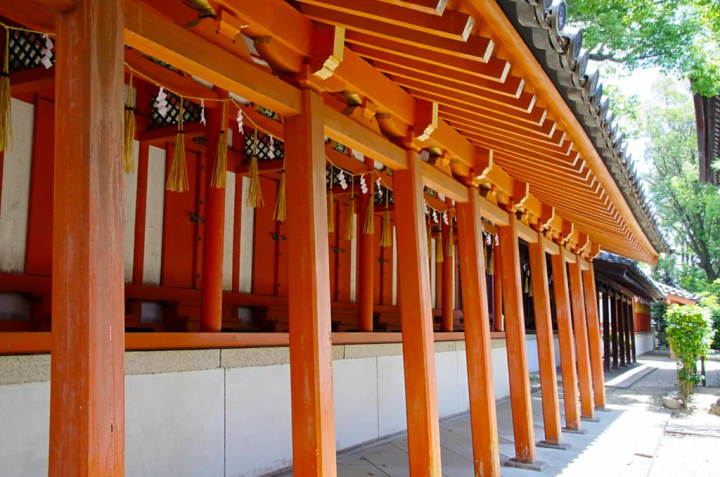
In the Chuo , there is the "Junisha Goden" where 12 gods are enshrined, in the Higashi there is the " Higashi Harima Sojinja Shrine" where the 8 districts of East Harima are enshrined, and in the west there is the "Nishi Harima Sojinja Shrine" where the 8 districts of West Harima are enshrined. "I'm going to Soja" originally meant visiting all the shrines up to here.
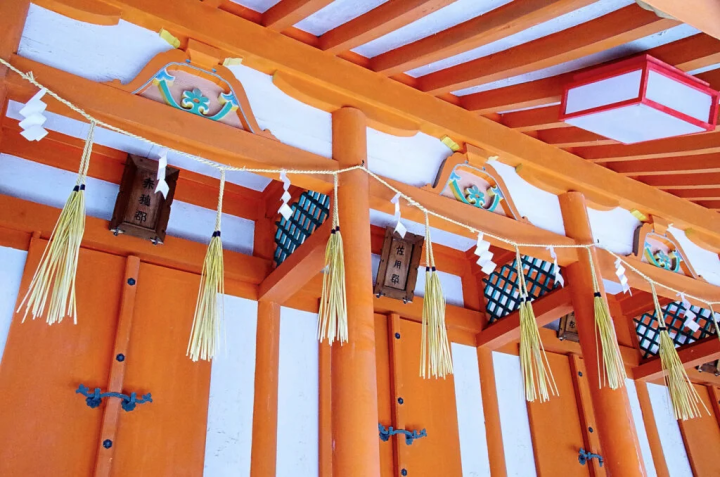
Visiting a shrine starts with giving thanks
When we go to a shrine, we pray with the idea in mind that "this place is for this god," but what about a Soja where all the gods gather? Take a look at this photo.
![[Himeji City ] How much do you know about Soja Soja , Harima Soja ?](https://resources.matcha-jp.com/resize/720x2000/2023/11/22-153576.webp)
It doesn't matter what it is. They watch over all aspects of life, including good relationships, safe childbirth, safety of the home, and prosperity in business.
We asked Mr. Sugihara, the deputy chief priest, about visiting the shrine. Rather than making requests, first express your gratitude. I think it will be easier to start by expressing your gratitude before making a request. After expressing your gratitude by saying "Thank you" ("I am only able to visit the shrine today because of my health and help"), please make your visit by saying something like "By the way, I have a request."
Just like breathing, you can't inhale unless you exhale. You can't fit anything in a dresser if it's full either. Just because you pray to God doesn't mean your wish will necessarily come true. Even when praying for success or victory, there is someone to be prayed for. If you can safely make it to the day of the competition, stand on the battlefield, motivate yourself, and perform better than usual, that is one example of God's power. Even if you are not satisfied with the result, God will surely be supporting you so that you can keep a positive attitude. It is important not to forget to be grateful every day.
Events at Soja-san
The most popular event is the first shrine visit of the year. The largest number of people is expected in the Harima region, with about 300,000 people visiting over the three days. The Hatsu Ebisu Festival (January 14th, 15th, and 16th) is also lively, with events such as the Takae Kago procession, and you can see the lively and exciting start of the year here.
The most important festival days are the Shimotsuki Grand Festival (November 13th, 14th, 15th, and 16th), which is held to commemorate the enshrinement of the 174 great and small deities from 16 counties. The Soja Summer Festival (July 10th and 11th) is the day to celebrate the establishment of Itatehyosuji Shrine in this area.
Other local events include the Setsubun Festival (February 3rd), the Minazuki Oharae-shiki Wanuke Festival (June 30th), and the Doll Thanksgiving Festival (June 1st - July 31st).
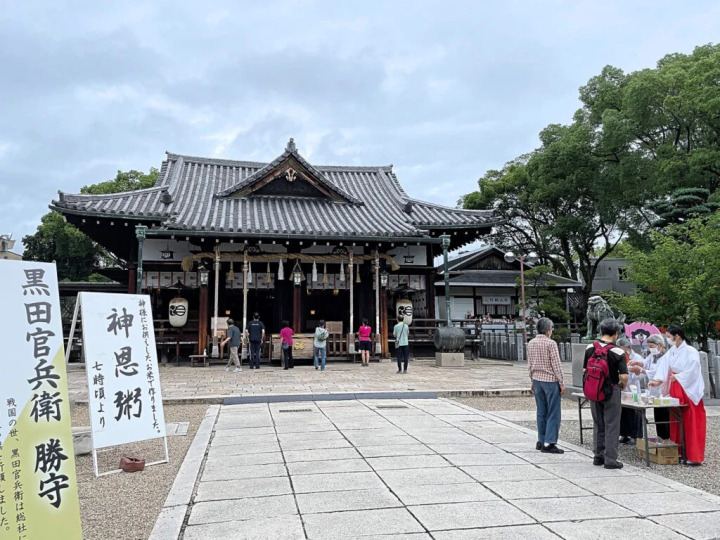
For the past 20 years, on the 1st (Sakujitsu Festival) and 15th (Chunichi Festival) of each month, a "Divine Grain Rice Porridge" has been held, where porridge made with rice offered to the gods is served. The event begins at 7am, and the porridge is offered with the hope that "we will receive the power of the gods and work hard with renewed determination."
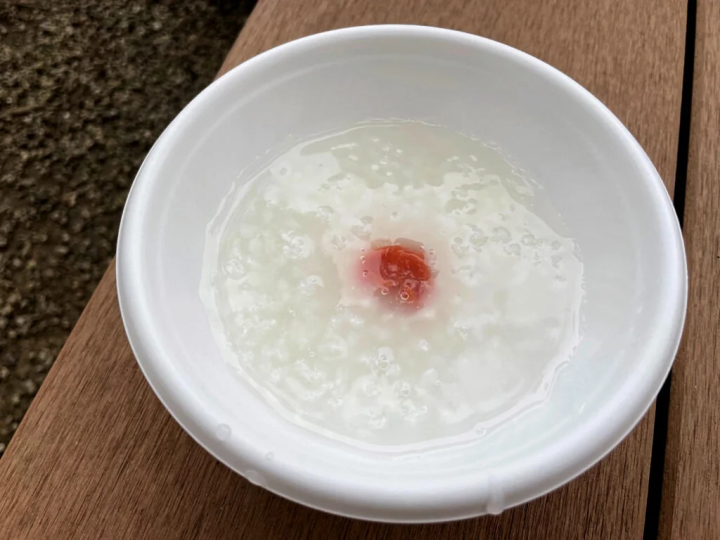
The Mitsuyama Festival, a grand festival held once every 20 years
In addition to the annual events, Soja also holds two very important events: the Mitsuyama Festival and the Hitotsuyama Festival. These are events to welcome the eight million gods from all over Japan and pray for happiness in the entire Harima region.
The Hitotsuyama Festival is held once every 60 years, with the last one being in 1987 (Showa 62), and the next one scheduled to be held in 2047.
The Mitsuyama Festival is a special festival of the Hitotsuyama Festival and is held once every 20 years.
The last time, it was held from March 31 to April 7, 2013, and attracted a total of 650,000 visitors. The next one will be in 2033, so this year (2023) marks 10 years since the last one and 10 years until the next one.
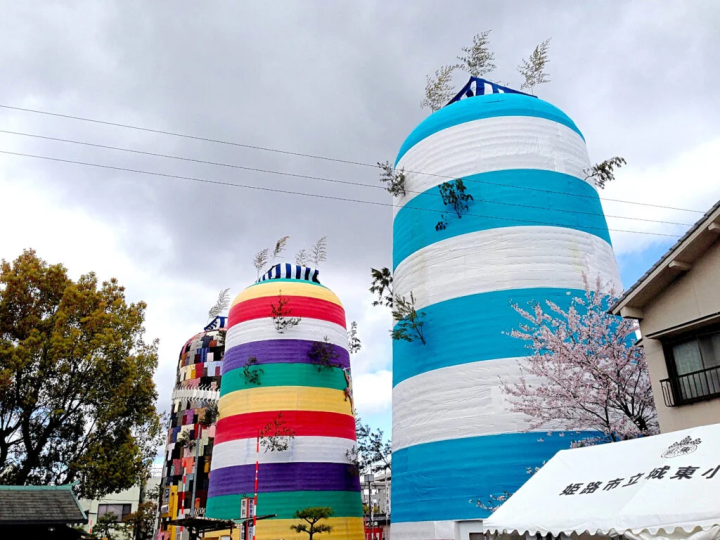
The Mitsuyama Festival is a festival to pray for the elimination of the eight hardships, misfortunes, and for peace and happiness in the country. Three large mountains (okiyama) are erected in the precincts (Goshikiyama, Nishikiyama, and Kosodeyama). They are 18 meters high, exactly the same height as the flagpole in the precincts.

Above the Shinmon gate are the shrines of Itate no Okami and Hori no Okami, who welcome the deities. The shrine on top of Mitsuyama invites deities from all over the country. The height of the shrine makes even the priests' legs tremble when they climb up to it (although strangely enough, it is not scary during the rituals).
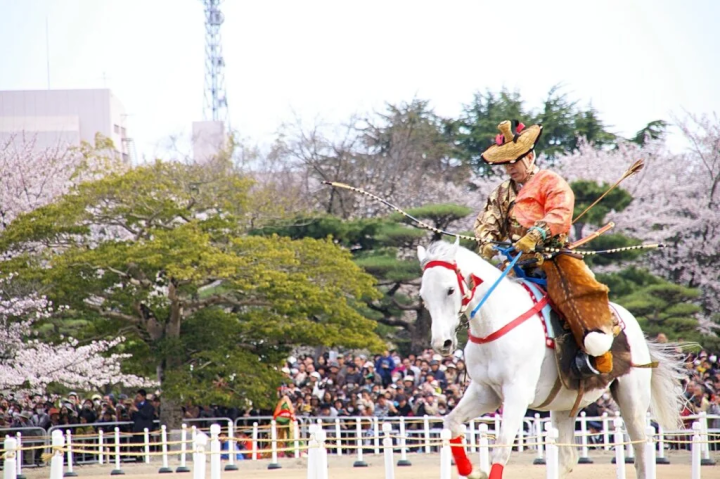
In addition, five types of Shinto rituals (horse racing, Hitotsumono, Miko-watashi, Yumi-hokoshi, and Yabusame) are held, and the castle town is decorated with "tsukurimono" (artificial objects), and the whole castle town is enveloped in a festival. Preparations for the 2033 festival are already underway, with the activities of the "Harima Soja Sosha Hitotsuyama Festival and Mitsuyama Festival Preservation Society" underway.
Specifically, the event involves participating in the first Ebisu Festival and holding "tsukurimono" (artificial object) making workshops (August and September), and is training people who will take the lead in making artifacts for the grand festival in 2034 (participants are being recruited on the official website).
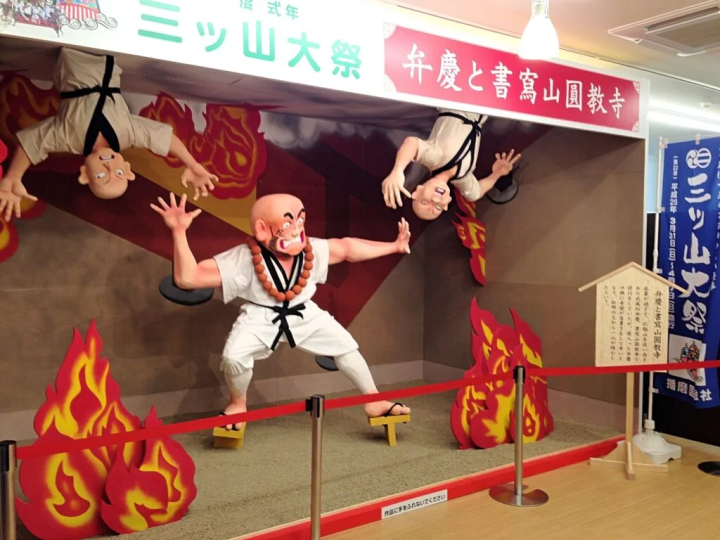
"Tsukurimono" are objects that are displayed in various places in the castle town during the festival. Ten years ago, they were made by high school students, university students, local volunteers, and members of the Self-Defense Forces, and were installed in 10 places, including the temple grounds and shopping streets. One of the things I enjoyed was walking around the castle town to see them.
One of the three mountains, Kosodeyama, is decorated with many kimonos. They need to be dried in the shade once a year, and about five years before the event, donations of used clothes begin to be collected.
The reason why kimonos are needed is because they are needed as futons for the gods (in the old days, there were no blankets and people slept in kimonos) to welcome the gods from all over the country. Even if it is a simple item, the gods will accept it if they are given with a heart, so the most important thing is that as a resident of the area, you want to welcome them.
There's plenty to see within the grounds of Soja
Soja is also a recommended tourist spot.
![[Himeji City ] How much do you know about Soja Soja , Harima Soja ?](https://resources.matcha-jp.com/resize/720x2000/2023/11/24-153693.webp)
On the west side of the temple grounds is a large red gate called "Soja Gomon." This gate was rebuilt in 2006 in the style of shrine architecture, originally a castle gate called "Soja" that stood on the west side of Soja Castle. Soja Gomon is one of the largest tower gates in Japan.
The Mogami(3rd floor) is a shrine and observation deck. On the 2nd floor, you can see valuable materials related to the Mitsuyama Festival (free of charge). The festival is preserved in paintings and other media. In the days when it was not possible to preserve images and videos like today, people would have relied on these paintings.
The 20 years have been a time for a change of generations, and they must have been preparing while facing this painting. In particular, the Okiyama used in the actual Mitsuyama Festival is demolished after the festival is over. A model of the Okiyama, one-tenth the size of the model (a nationally designated important tangible folk material), has been passed down from generation to generation.
![[Himeji City ] How much do you know about Soja Soja , Harima Soja ?](https://resources.matcha-jp.com/resize/720x2000/2023/11/24-153694.webp)
Historical buildings that remain include the large torii gate (a prefectural important cultural property) and the bronze bell that was donated in 1506 (Eisho 3).
![[Himeji City ] How much do you know about Soja Soja , Harima Soja ?](https://resources.matcha-jp.com/resize/720x2000/2023/11/24-153696.webp)
There are several sub-shrines within the grounds, including Osakabe Shrine. It is the third Osakabe Shrine, following Osakabe Shrine on the Mogami of the Himeji Castle tower and Osakabe Shrine in Tatemachi, the center of the Yukata Festival. It seems that it was moved or divided due to fires and epidemics.
Some connoisseurs even come here to pray during the Yukata Festival.
![[Himeji City ] How much do you know about Soja Soja , Harima Soja ?](https://resources.matcha-jp.com/resize/720x2000/2023/11/24-153697.webp)
This "Patted Mimizuku" is a Mimizuku, a divine messenger. It is worshipped as a symbol of intelligence and is said to be a lucky bird that brings good omens.
![[Himeji City ] How much do you know about Soja Soja , Harima Soja ?](https://resources.matcha-jp.com/resize/720x2000/2023/11/24-153698.webp)
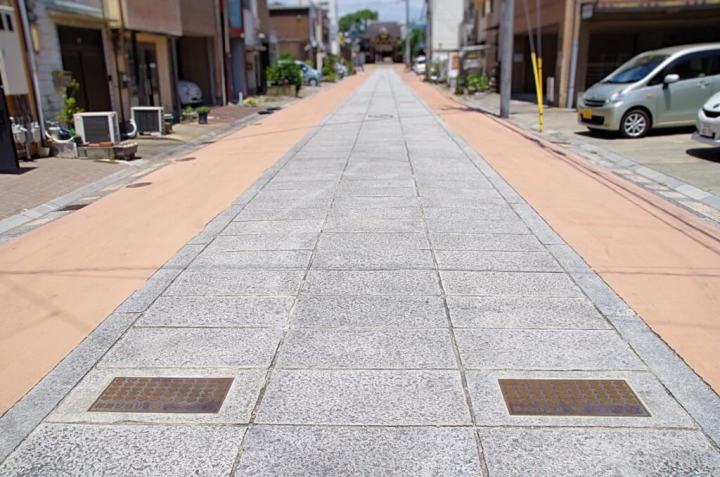
A new feature is that the approach to the main shrine from just before the large torii gate has been named "Himeji Matchmaking Street," and the grounds now feature face-in panels and a place to hang votive plaques for matchmaking.
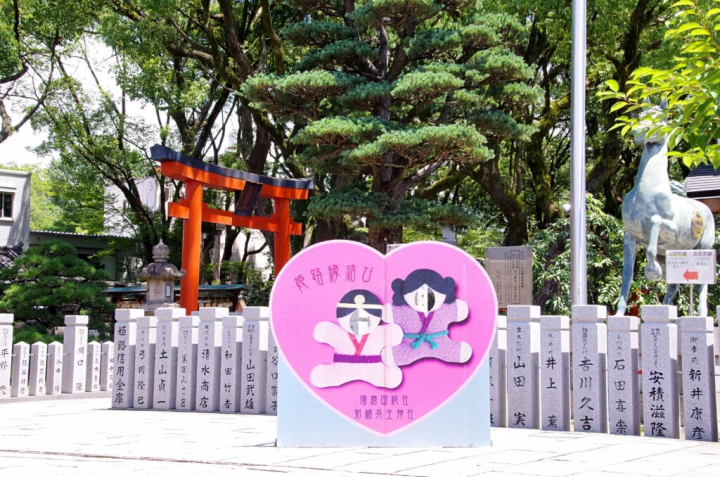
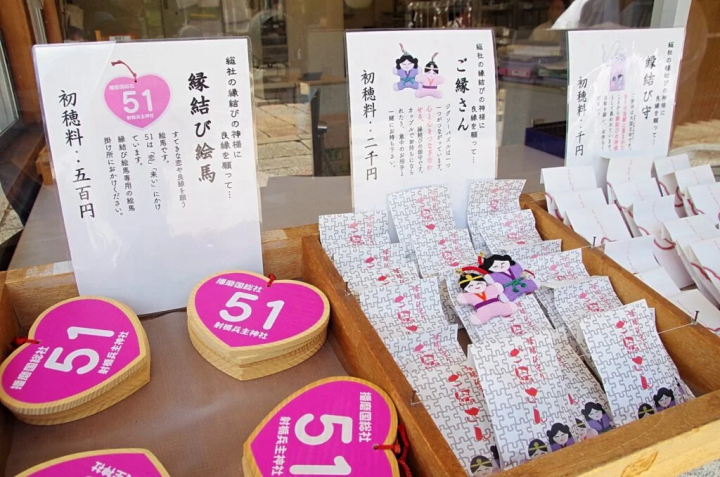
There are many different kinds of connections, not just romantic ones. There are charms to help you find many new connections.
The "Goen-san" amulet is shaped like several pieces of a puzzle.
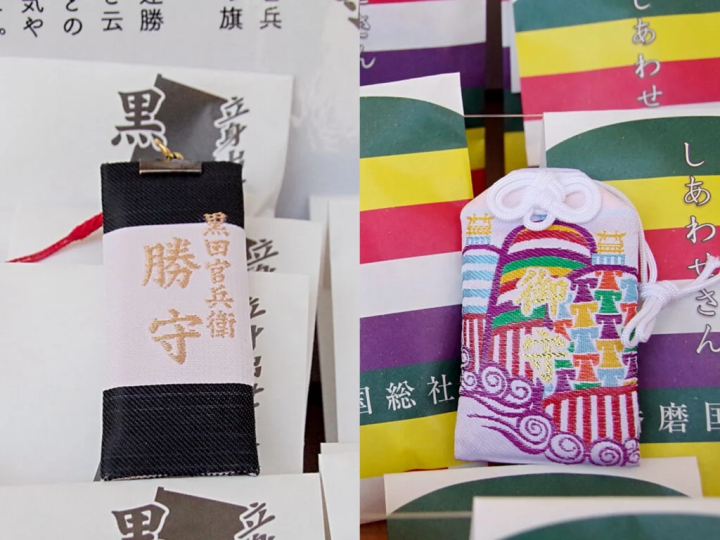
There are other charms available as well. Popular ones include the "Kachi-mamori" (Victory Charm), named after the military commander Kuroda Kanbei, who is said to have never lost in his life, and the "Shiawase-san-mamori" (Happiness Charm), which features a design of the Mitsuyama Festival.
There are three types of fortune slips. There are also fortune slips with amulets attached.
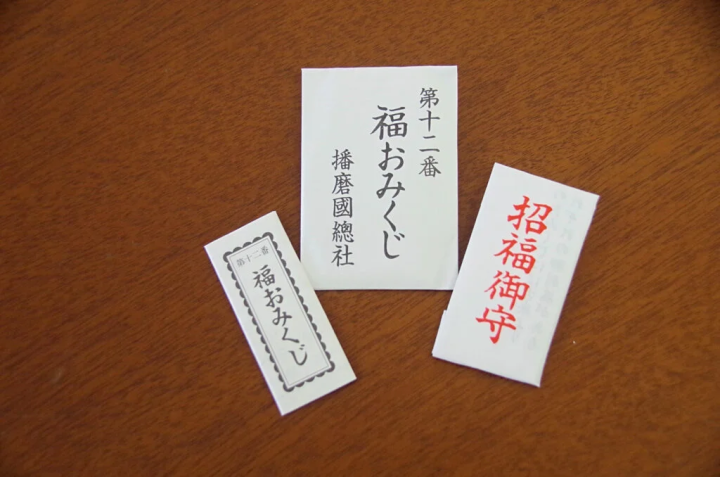
Finally, let me introduce something to look forward to in spring. The cherry blossoms in the temple grounds. The weeping cherry tree next to the shrine office is particularly beautiful.
When you think of cherry blossoms in Himeji, Himeji Castle comes to mind, but the cherry blossoms at Soja are also recommended.
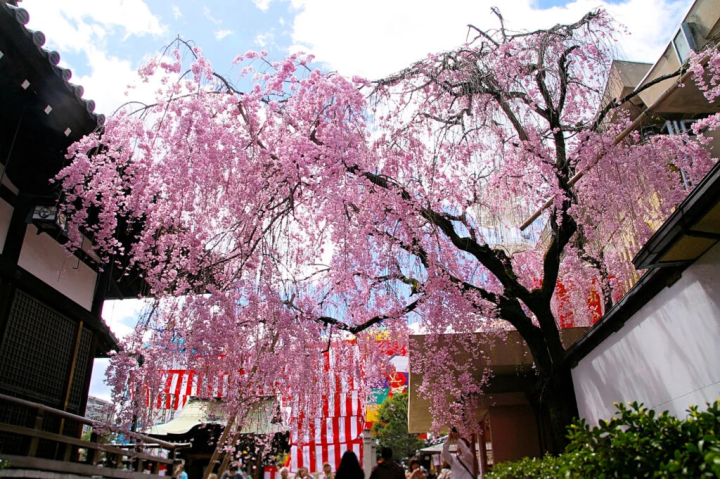
(Writer: Ryuji Tsukamoto)
*This article is current as of September 2023. Prices include tax. Product contents and prices may be subject to change.
Useful Information
Hyogo Amazing Pass
With this ticket, you can not only ride all local buses (orange Shinki buses) that run within Hyogo Prefecture for one day, but you can also ride the City Loop and Port Loop, which connect Kobe's major tourist spots, as much as you like.
Use this offer to travel around Hyogo Prefecture at a great price!
Luggage storage service
Would you like to go sightseeing empty-handed?
basic information
Harima Soja Itatehyōzu Shrine
Address: 190 Hyogo Prefecture , Himeji City, Soja Prefecture
Phone number: 079-224-1111
Access: 15 minutes on foot from the north exit of JR Himeji Station or Sanyo Electric Himeji Station, then get off at the Shinki Bus stop "Citizens' Hall"
Parking: Available (paid) 30 minutes free for worshippers, 2 hours and 30 minutes free for prayer, other conditions apply
Website: https://www.sohsha.jp/
What are good things and good experiences? There are many characteristics such as having a story to tell, overflowing with the thoughts of the creator, having a history, and being loved by the locals. Have you ever come across a special thing or experience that made you want to tell someone about it? And as a result of telling, someone new leads to something. We think that's what "good" is all about. In order to deliver such encounters to our customers, we discover Hyogo's good things based on the concept of "talk, communicate, and connect", and provide information that will shorten the emotional distance between customers and the region of Hyogo Prefecture.
The contents on this page may partially contain automatic translation.


![[Hyogo Prefecture] Unlimited rides on local buses for just 2,500 yen! Travel around Hyogo Prefecture at a great price](https://resources.matcha-jp.com/resize/200x2000/2023/09/25-146913.webp)































![[Coupon Available] Attention Overseas Winter Sports Fans! Nagano's Sports Depot Has Evolved](https://resources.matcha-jp.com/resize/720x2000/2026/01/05-254819.webp)
![[2 hours from Tokyo ] 10 Quiet and Breathtaking Views of Mount Fuji in Yamanashi Hokuto City , Yamanashi - Part 2](https://resources.matcha-jp.com/resize/720x2000/2025/12/16-253037.webp)

![[Reopening in March 2026] Ikoma Sanjo Amusement Park Park, 45 minutes from Osaka , with free admission](https://resources.matcha-jp.com/resize/720x2000/2024/08/28-194409.webp)